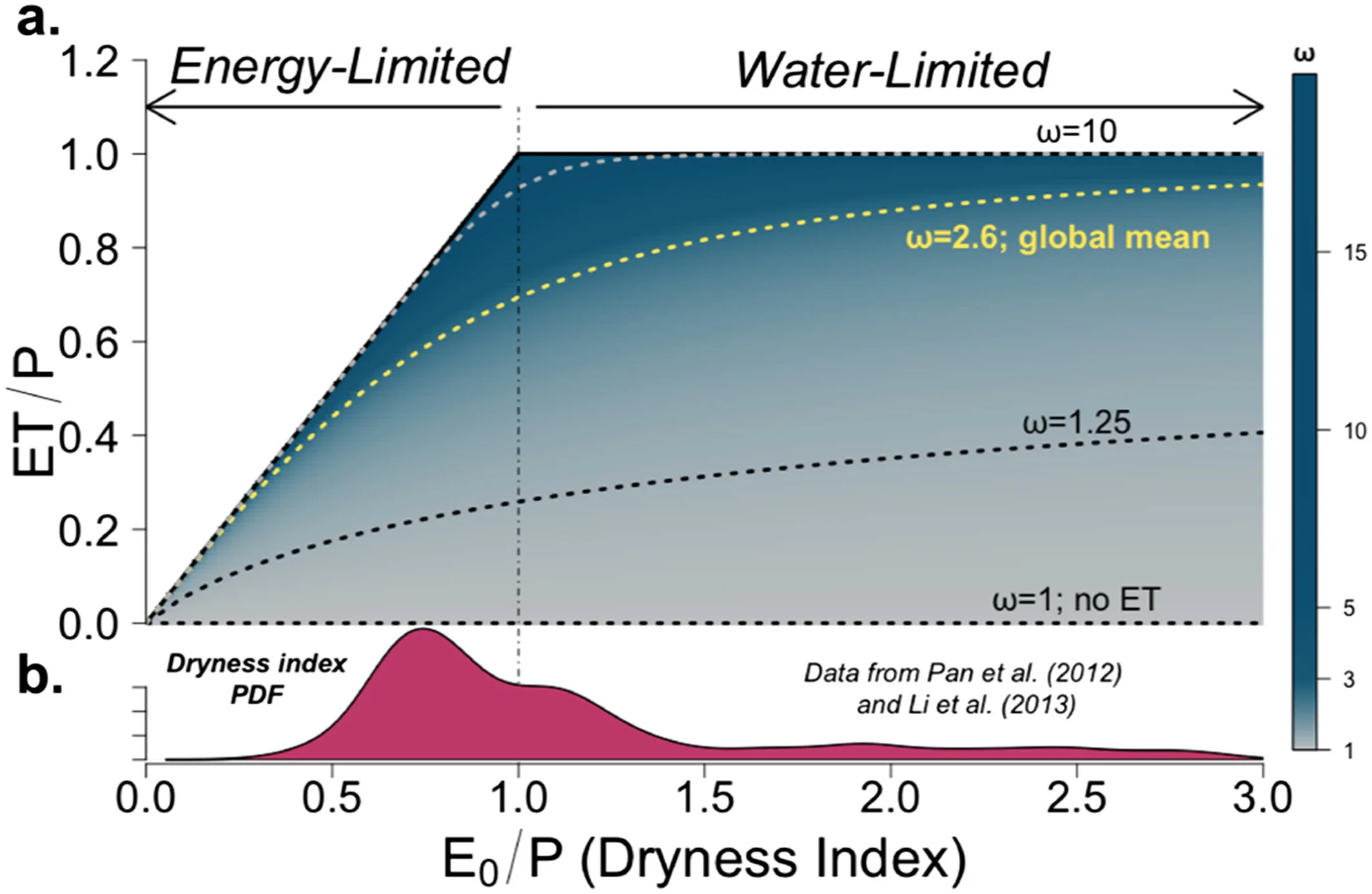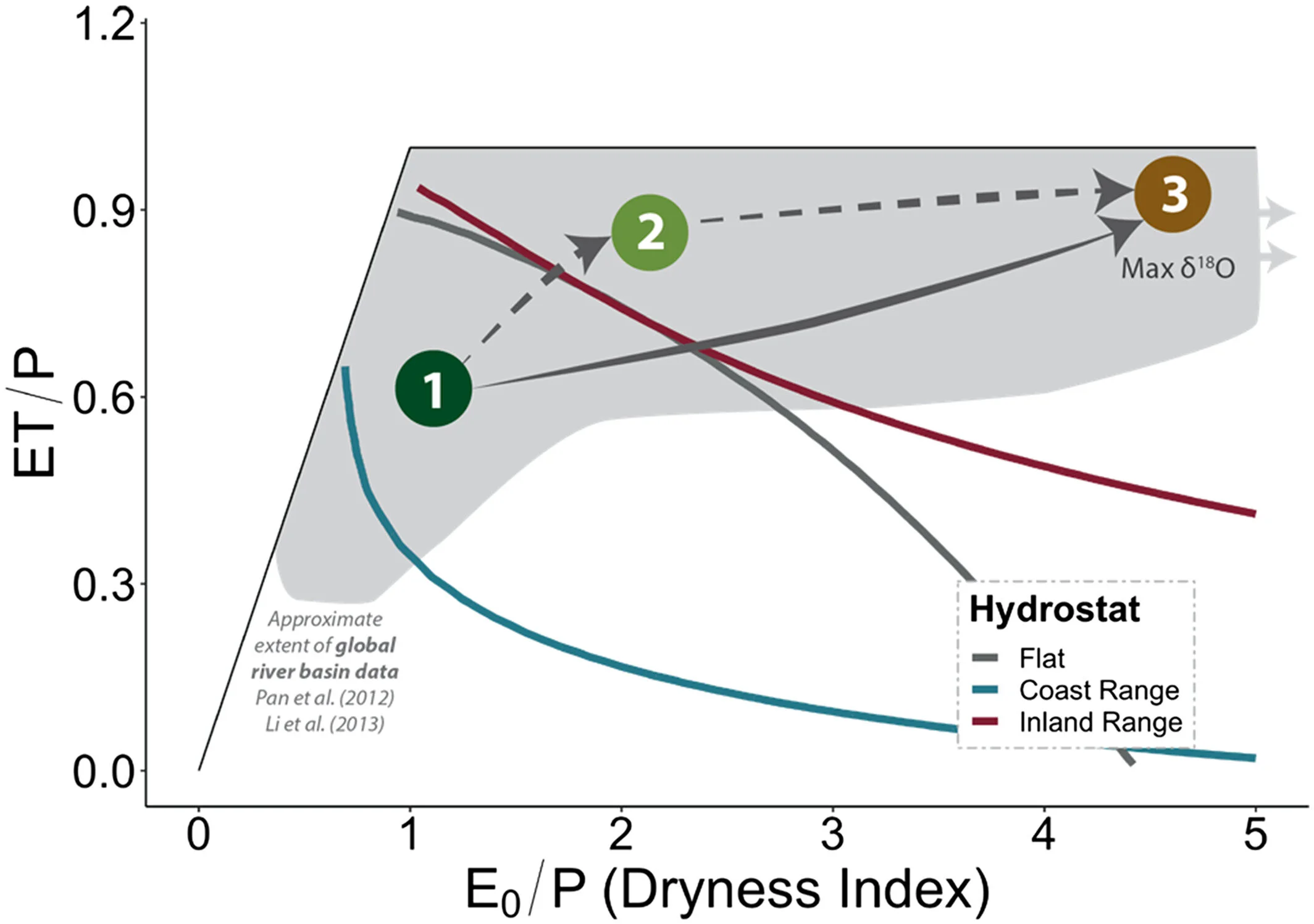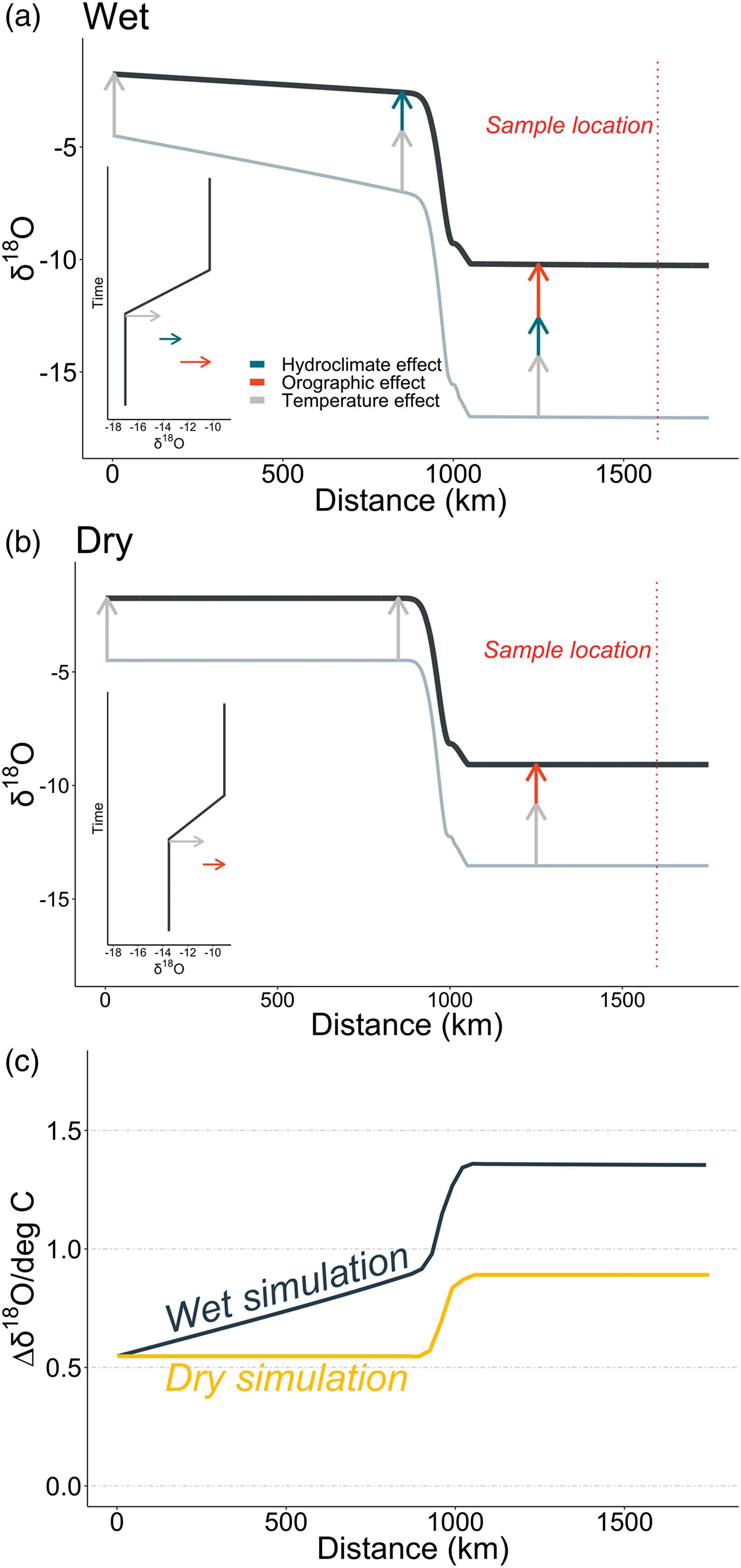A model for precipitation δ18O along a storm track
This paper presents a reactive transport model that predicts (1) hydroclimate fluxes and (2) their oxygen isotopic compositions (δ18O) over space. The model is designed for paleoclimate analysis, so we aimed to limit the number of free parameters while accurately simulating the most important processes for rainout and δ18O.
The benefits of spatial oxygen isotope gradients
The change in δ18O over space is insensitive to a wide range of factors that confound climatic interpretations of δ18O at a single site (e.g. Hu et al., 2008; Winnick et al., 2014). For example, upstream effects, temperature, or anything that affects regional δ18O similarly will have no effect on the spatial difference in δ18O.
Key concepts in this work
In this paper we highlight three main concepts that inform δ18O interpretations (discussed more below): (1) The energy balance constraint; (2) The hydrostat; and (3) Spatial variations in the temperature sensitivity of δ18O.
The sensitivity of terrestrial δ18O gradients to hydroclimate evolution
T Kukla, MJ Winnick, K Maher, DE Ibarra, CP Chamberlain. (2019). JGR Atmospheres.



